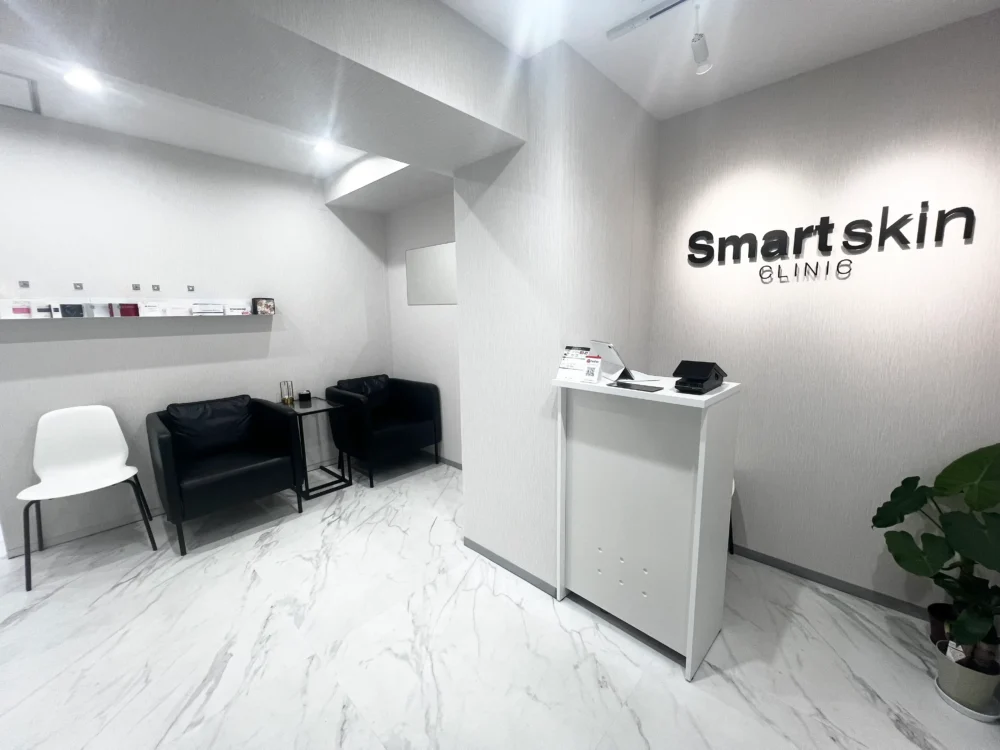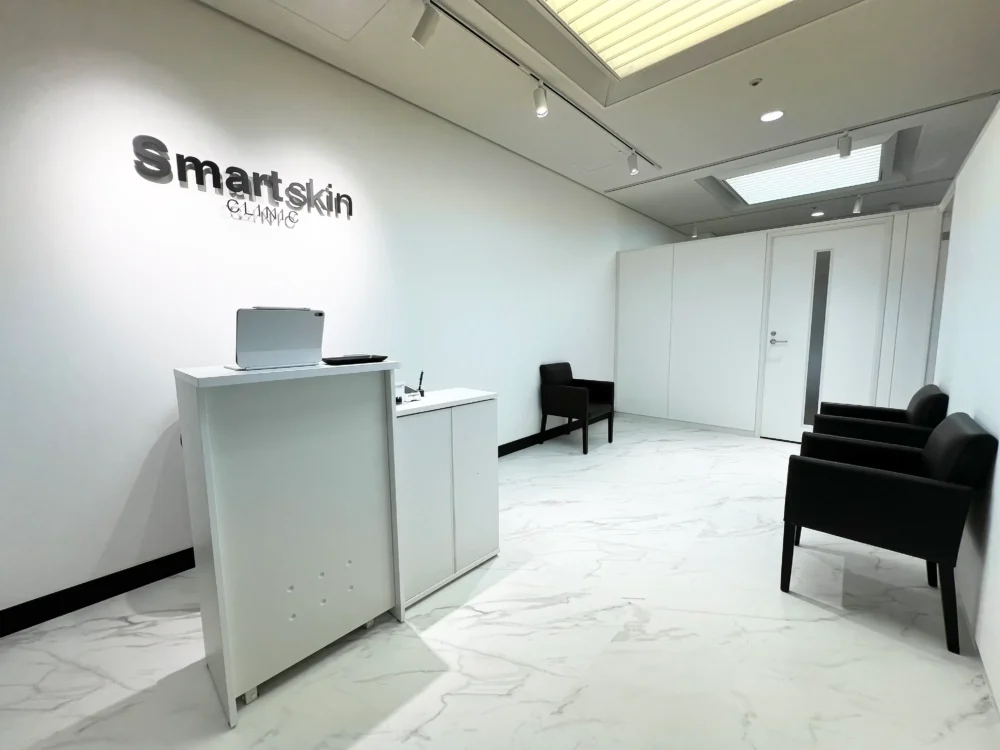PRP Mesotherapy for Hair Regeneration Treatment (FAGA, AGA, Thinning Hair Treatment)

- I'm concerned about my thinning hair, but I'm worried about the side effects of oral medications..."
- I want to improve my thinning hair in the most natural way possible."
- What options are there for effective treatments for thinning hair in women?"
- I've tried oral and topical medications, but I can't continue to use them because of the side effects..."
For those suffering from female-onset hair loss (FAGA), the choice of treatment is an important issue. In particular, in recent years, there has been an increasing demand for natural treatments with fewer side effects.
In this article, we will discuss PRP mesotherapy, a highly safe treatment method that uses components derived from autologous blood, This article is an easy-to-understand explanation of "PRP Mesotherapy," a safe treatment method using autologous blood-derived components, from a professional standpoint at our clinic, which is accredited by the Ministry of Health, Labour and Welfare for its Regenerative Medicine Provision Plan. (*Type 2 and 3 Regenerative Medicine Provision Plan Accreditation Number: NA8230001)
Why is PRP mesotherapy attracting attention? And what features PRP mesotherapy has over other treatment methods, from a medical point of view.
Chairman of Smart Skin Clinic Group
stone Kouta
career
Graduated from Juntendo University School of Medicine
Tokyo Women's Medical University Hospital and related facilities
Worked at a major beauty clinic in Tokyo
Affiliation / Qualifications
Japan Surgical Society Specialist
Japanese Society of Anti-Aging Medicine
PRP Mesotherapy is recommended for
- Low risk of allergy or rejection due to the use of autologous blood-derived components
- No systemic effects like oral medications
- No risk of serious side effects such as hyperkalemia
- Can be considered even if you are considering pregnancy or childbirth
- Concerned about hyperkalemia risk of spironolactone
- Concerned about minoxidil lowering blood pressure and hypertrichosis
- Those who wish to avoid influences on hormonal balance.
- Those who are concerned about changes in physical condition caused by oral medications
- Those who wish to improve their condition with autologous ingredients rather than artificial agents.
- Those who wish to avoid hormone therapy and other drug treatments.
- Those who wish to restore the natural hair growth cycle.
- Those seeking to improve the overall health of the hair follicle environment
- Those who prefer gradual improvement rather than abrupt change.
- Can be used in combination with other treatments
- Treatment intervals can be adjusted to fit your lifestyle
- Relatively easy to interrupt and resume treatment as needed
- No hassles of daily oral or topical application
- Relatively rich in research data
- Proven medical effectiveness
- Long-term safety is confirmed.
- World-proven treatment
- Those who wish to avoid the risk of side effects from oral medications.
- Those who are burdened with the daily use of topical agents
- Those who aim for improvement from a long-term perspective.
- Those who desire a natural improvement process.
- Those considering combining with other treatments.
- Cost is relatively high
- Need a certain period of time to realize the effect
- Requires regular visits to the hospital
- Effects vary from person to person.
Although price is a consideration, it is one of the better options that is safe and offers a natural improvement. It is a good option for those who have concerns about side effects from other treatments or who prefer a more natural improvement.
What is FAGA?
Female Androgenetic Alopecia is a progressive thinning of hair that is unique to women.
- Gradual thinning of the entire top of the head
- The hairline is relatively preserved (a major difference from male pattern baldness)
- Christmas-tree shaped split openings (characteristic symptom)
- Gradual thinning of hair (fine hair)
- Loss of firmness and elasticity
- Luster decreases
- Hair becomes too soft and hard to manage
- Diffuse: gradual thinning of the entire top of the head
- Complete hair removal is often not achieved.
- Slow progression (years to decades)
- The split in the eyes begins to show.
- Increased hair loss when shampooing
- Difficulty in keeping hairstyles in place
- Scalp becomes transparent.
- Decreased hair volume
- AGA is localized hair loss in the frontal and parietal regions
- FAGA is diffuse thinning of the entire parietal area of the head
- FAGA rarely leads to complete hair loss
- FAGA tends to preserve the hairline.
- Most cases occur in the 40s and 50s.
- Increased incidence around menopause
- It is estimated that about 20% Japanese women experience
- Increasing incidence in younger age groups
Causes and Mechanisms of FAGA
The basic premise of FAGA is that the patient has a "genetic predisposition," and then the disease develops and progresses through the following process. Without a genetic predisposition, the following changes basically do not cause the onset of the disease.
First, it is important to note that FAGA has a significant genetic component.
This genetic predisposition makes the hair follicles of the scalp susceptible to male hormones (androgens).
If you have a family member with thinning hair, it is more likely that you have inherited this genetic predisposition.
- With aging and menopause, female hormones (estrogen) begin to decline
- Decrease in estrogen, resulting in a stronger influence of androgens (male hormones)
- Testosterone, a type of androgen, is converted to DHT (dihydrotestosterone)
- DHT affects hair follicles, causing hair thinning
- DHT binds to androgen receptors in hair follicles, shortening the hair growth phase
- Longer resting phase and thinner, shorter hair
- Women have androgen receptors distributed throughout the parietal region, resulting in diffuse thinning of hair
- Gradual decrease in hair density throughout the top of the head
- Thinning of the entire top of the head, rather than complete loss of hair in a specific area.
- The split widens to form what is known as the "Christmas tree pattern.
In addition to these basic mechanisms, the following factors can also influence symptoms
- When iron and zinc are deficient, the hair does not receive enough oxygen and nutrients necessary for hair growth.
- Chemical treatments such as perms and coloring can strain the hair follicles and scalp and exacerbate symptoms.
- Inflammation of the scalp caused by chemical treatment aggravates blood flow and further impedes hair growth.
Treatment of FAGA
To understand the treatment of FAGA, let us first briefly review the mechanism of pathogenesis:
Genetic factors play a major role in the development of FAGA. Familial inheritance of sensitivity to androgens may result in future thinning of hair.
With aging and menopause, female hormone (estrogen) production decreases. As a result, the relative influence of male hormones (androgens) intensifies and promotes the progression of hair loss.
Testosterone, a type of androgen, is converted to DHT (dihydrotestosterone), which binds to androgen receptors in hair follicles. This shortens the hair growth cycle, resulting in gradual thinning of the hair.
FAGA is characterized by diffuse thinning of the entire top of the head, unlike androgenetic alopecia (AGA). Instead of complete loss of hair in a specific area, there is a gradual decrease in hair density.
Current medicine offers the following treatment approaches for each stage of this pathogenic mechanism
spironolactone(Action phases: 2 & 3)
- Correction of hormonal balance (improvement of balance relative to estrogen)
- Prevents DHT binding and reduces androgenic effects on hair follicles
oral minoxidil(Action phase: 4)
- Improves blood flow through vasodilating action, and improves the hair follicle environment
- Extends the growth period of hair and promotes hair growth
Topical minoxidil(Action phase: 4)
- Improvement of hair follicle environment by improving scalp blood flow
- Activation and growth promotion of hair follicles
- Normalization of hair growth cycle
PRP Therapy(Action phase: 4)
- Activation of hair follicles by autologous blood-derived growth factors
- Improved hair growth environment
- Promotes natural hair regeneration
HARG therapy(Action phase: 4)
- Activation of hair follicles by special growth factors
- Promotes hair follicle regeneration and improves the growth environment
- Improved hair thickness and density
exosome therapy(Action phase: 4)
- Activation of hair follicles by promoting intercellular signaling
- Improvement of hair regeneration environment
- Helps maintain healthy hair follicles
Stage of action: 4 (Effect on the entire parietal area and hair thinning)
- Improvement of the growth environment by supplying nutrients necessary for hair growth
- Zinc: Supports cell division in hair follicles
- Iron: Supports keratin production
- Vitamin D: Helps maintain healthy hair follicles
*Supplements do not act on the underlying causes of FAGA (genetic factors or hormonal balance) and play a supplementary role.
Comparison of various treatment methods for FAGA
Each treatment method will be explained in detail, including the mechanism of action, treatment features, risks, and precautions to be taken in actual treatment.
1. treatment with oral medication
mechanism of action
- Blocks androgen receptors and inhibits the effects of DHT (male hormone)
- Works against the hormonal imbalance that causes FAGA
Treatment Features
- Requires continuous oral administration to maintain effectiveness
- Symptoms may progress again upon discontinuation of oral medication
- Temporary correction of hormonal balance, not a curative treatment
- It often takes 3-6 months to realize the effects
- Requires management by long-term dosing
Risks and Cautions
- Effects of relative increase in estrogen (possible menstrual irregularities and amenorrhea)
- Risk of breast tenderness and breast enlargement
- Risk of hyperkalemia due to effects on electrolytes, especially potassium
- Possible arrhythmia, muscle weakness, fatigue
- Blood tests every 1-3 months are required.
2. treatment with topical agents
mechanism of action
- Improved local blood flow
- Activation of hair follicles
- Extended growth period
Treatment Features
- Basically, the effect lasts only during use
- Return to original condition in 3-4 months by discontinuation
- Low risk of side effects compared to oral medications
- Requires continuous daily use (twice daily)
- It takes about 3-6 months to realize the effect.
Risks and Cautions
- Initial hair loss (temporary hair loss in the first few weeks of use)
- Irritation to scalp (redness, itching, possible rash)
- Dry scalp and dandruff (due to alcohol in the formulation)
3. injection therapy (mesotherapy)
A) PRP Therapy
mechanism of action
- Injection of platelets extracted from autologous blood
- Activation of hair follicles by growth factors
- Promotes natural hair regeneration
Treatment Features
- High safety due to the use of autologous ingredients
- Effects are not semi-permanent and require regular treatment
- 3-5 treatments per course
- Treatment every 6 months to 1 year is recommended as maintenance therapy
Risks and Cautions
- Minor pain and swelling immediately after the procedure
- Possible temporary internal bleeding (1-2 weeks)
- Requires regular visits to the hospital
- Relatively high treatment costs
B) HARG therapy
mechanism of action
- Activation of hair follicles by special growth factors
- Promotes collagen production
- Improved hair growth environment
Risks and Cautions
- Temporary swelling and internal bleeding after the procedure
- Need for continuity of treatment
- Relatively high treatment costs
C) Exosome therapy
mechanism of action
- Activation of intercellular signaling
- Promotes hair follicle regeneration
- Improved hair growth environment
Treatment Features
- Relatively new treatment
- Long-term effectiveness data is limited at this time.
- Requires ongoing treatment
4. supplementary approach with supplements (e.g., Pantogar)
Features and Limitations
- No effect on the underlying causes of FAGA (hormonal balance, genetic factors)
- Auxiliary positioning only.
- Dramatic improvement cannot be expected on its own.
- Recommended in combination with other treatments
Main Nutrients and Benefits
- Zinc: Supports cell division and hair follicle regeneration
- Iron: Supports keratin production and oxygen supply
- Vitamin D: Helps maintain healthy hair follicles
Important Considerations
1. effects
- Neither treatment is "curative" at this stage.
- Often requires continued treatment
- A certain period of time is required for the effect to develop.
- Individual differences are great.
2. concept of treatment selection
- Often a combination of multiple treatments rather than a single treatment
- Selection based on the customer's condition and lifestyle is important.
- Balancing Risks and Benefits
- Focus on sustainability
3. the importance of consultation with a medical specialist
- Treatment selection based on detailed diagnosis
- Periodic monitoring
- Appropriate response to side effects
- Adjustment of treatment plans as appropriate
Differences from Exosome Mesotherapy
|
Our recommendation
PRP Mesotherapy
|
exosome mesotherapy | |
| Summary | Extract growth factors from autologous blood and inject them into hair follicles | Injection of exosomes derived from stem cell cultures |
| Scientific Evidence | More than 10 years of experience and many papers | Reports of effectiveness are increasing, but long-term studies are still developing |
| Origin of Ingredients | Your own blood (autologous) | Extracted from high-quality stem cell cultures |
| hair growth mechanism | Growth factors activate hair root cells | Exosomes send regeneration signals to hair follicles. |
| Number of treatments | About 3 to 6 times | About 3 to 6 times |
| immediate effectivity | Effects are realized in 3 to 6 months (individual differences exist) | Effects are realized in 3 to 6 months (individual differences exist) |
| Safety | Almost zero allergy risk due to autologous origin | Formulation has passed various safety tests |
| cost effectiveness | Cosmetics are prepared in our laboratory. | Tends to be expensive due to high formulation costs |
| Recommended for | Safety, cost-effectiveness, and performance-oriented | For those who were not satisfied with other treatments and Interested in new technologies |
In our hospital,PRP Mesotherapy," which is reliable, safe, and cost-effective, is our mainstay treatment.We are proposing this as a
Exosome mesotherapy is also an option depending on your needs and concerns.
Please feel free to contact us for a free consultation to discuss which is more suitable for you.
Features of PRP Mesotherapy at Smart Skin Clinic
Direct injection of active ingredients deep into the scalp
Autologous blood-derived regenerative medicine
Our hospital is a "facility accredited by the Ministry of Health, Labour and Welfare for the Regenerative Medicine Provision Plan".
Extensive experience in PRP treatment
Flow of treatment
Free Counseling
The specialist will examine your current condition and propose the best treatment plan.
blood collection
The client's own blood is collected to generate PRP (platelet concentrated plasma).
PRP generation and preparation
PRP is purified from blood samples to activate growth factors.
Treatment (mechanical injection)
PRP is injected evenly into the scalp using a specialized device.
Aftercare after treatment
Protection of the scalp and guidance on proper aftercare will be provided.
Charge
PRP Mesotherapy Prices in Tokyo
The price per PRP mesotherapy session in Tokyo is120,000~220,000 yen(as of February 2025). (as of February 2025)
Smart Skin Clinic Fees
| Once | 89,800 yen |
| 3 times | 254,400 yen (1 time 84,800 yen) |
| 5 times | 399,000 yen (1 time 79,800 yen) |
| Monitor] 5 times | 349,000 yen (1 time 69,800 yen) |
Treatment Details
| Treatment Time | 20-30 minutes (plus 1 hour of waiting time during PRP preparation) |
|---|---|
| commuting to hospital | Basic treatment minimum 3 times, consult with doctor for intervals |
| Post-treatment precautions |
Avoid excessive exercise and alcohol consumption on the day of treatment. Showering is allowed on the same day, but wash hair gently. Avoid scalp massage and strong stimulation after treatment. Able to return to normal life the next day or later |
| Risks and Side Effects |
Mild swelling and redness may occur after the procedure (usually subsides within 1-2 days). Rarely, temporary internal bleeding may occur (usually disappears in about a week). The effectiveness of the treatment depends on the individual. |
*If you have any symptoms of concern after the procedure, please consult your doctor immediately.
After-sales service
Day of treatment
- Avoid excessive exercise
- Showering is allowed (wash hair gently).
- Refrain from scalp massage
- refrain from drinking alcohol
Next day or later
- Normal hair washing possible
- Exercise can be resumed gradually
- Use scalp care products only after checking with a physician
*Period of progress after the procedure varies from person to person. If you experience any symptoms of concern, please consult your doctor.
Frequently Asked Questions (FAQ)
FAQ
Q. Is the procedure painful?+
Although the scalp may seem painful, it is actually not as painful as the facial treatment. You may feel a slight discomfort after the treatment, but it usually goes away within a few days.
Q. How many treatments are required?+
Basically, we recommend at least three treatments. There are various research results, and there are many cases in which results are obtained after 3 sessions, but please understand that there are individual differences.
Q. Is there any downtime after the procedure?+
Basically, there is little downtime, but mild redness and swelling may occur after the procedure. It usually settles down within 1-2 days.
Q. Can I wash my hair immediately after the treatment?+
Please refrain from washing your hair on the day of treatment, and gently wash your hair from the following day. Avoid rubbing the hair hard and use a hypoallergenic shampoo.
Q. How long does it take to see results?+
Although there are individual differences, most people begin to feel the effects about 3-6 months after the treatment. Higher effects can be expected with continued treatment.
First, please contact us for a free consultation.
The clinic does not engage in any forced sales or up-selling.
Our specialists will provide you with appropriate advice tailored to your condition.
*You can decide whether to undergo treatment after the consultation.
Book a Free CounselingClinic List

Jimbocho Institute
〒101-0054
EX Kanda Nishiki-cho Building 8F (general reception), 3-16-1 Kanda Nishiki-cho, Chiyoda-ku, Tokyo 7F
Business hours: Monday-Friday 11:00-20:00 / Saturday and Sunday 10:00-19:00

Yokohama Institute of Technology
〒221-0835
TS Plaza Bldg. 2F, 2-23-2 Tsuruya-cho, Kanagawa-ku, Yokohama-shi, Kanagawa
Business hours: 10:00-19:00
